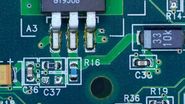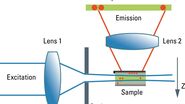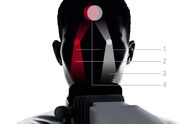How does EDOF work?
EDOF imaging with Leica widefield optics (stereo, compound, or digital microscopes) is based on focus variation. The limited focus depth (depth of field) of the optics is exploited to determine sample height and depth information. Vertical movement of the sample relative to the objective lens enables in-focus information along the optical axis to be determined. For each vertical position of the sample, the LAS X software separates the image region in sharp focus from the out-of-focus one. A “stack” of images is acquired and the areas in-focus are combined to make a sharp composite image of the sample with a large vertical range.





